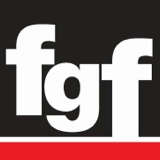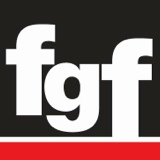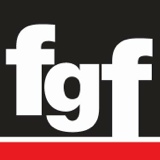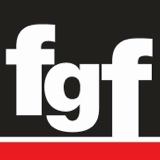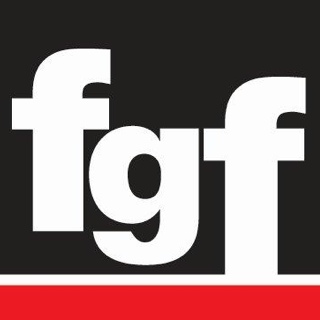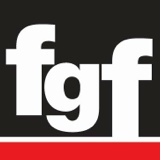Information
-
Document No.
-
Audit Title
-
Client / Site
-
Conducted on
-
Prepared by
-
Location
-
Personnel
1. General Safety Requirements
-
Note: Consult with both workers and Subcontractor to see if they understand their requirements to report any Safety Incidents/Issues/Concerns.
-
1.1 Is Site signage displayed at the entrance to the project (signage at entrances restricting access)?
-
1.2. Has a Construction Safety Plan been completed for the project/work (check date issued)?
-
1.3. Are Safe Work Method Statements available for all high risk activities (check that relevant staff have signed SWMS)?
-
1.4. Have all staff and sub-contractors received a site specific induction and white/blue cards sighted? (check a few)
-
1.5. Are emergency telephone numbers available/displayed?
-
1.6. Are incident/injury forms available?
-
1.7. Has Foreman/Supervisor completed weekly safety inspections?
-
1.8. Have Daily Pre-starts/Toolbox Talks been completed?
-
1.9. Site office (where provided) has a Fire Extinguisher and testing of extinguisher is current (6 month intervals)?
2. Overhead / Underground Services
-
2.1. Ergon Safety Advice has been received?
-
2.2. Ergon requirements in place as per Safety Advice?
-
2.3. Dial-Before-You-Dig plans available?
-
2.4. As-cons drawing available (existing services)?
-
2.5. Local Government services identified e.g. Water, Sewerage?
3. First Aid
-
3.1. First aid officer's identities displayed?<br>
-
3.2. Are there sufficient first-aid kits at the workplace?
-
3.3. Are first-aid kits checked for correct contents. Do contents of kit agree with contents list?
-
3.4. Is all contents in date?
-
3.5. Are all injuries recorded and reported (view book or incident report form)?
4. Electrical Equipment/Power Tools
-
4.1. Is electrical equipment tested and tagged on a regular basis? (Check date of next test)<br>
-
4.2. Are generators protected by an RCD?<br>
-
4.3. Has the RCD been manually tested to ensure correct operation? (Date of test)
-
4.4. Are all leads plugged into RCD's (No double adaptors or piggy back plugs)?<br>
-
4.5. Electrical gear and leads are not exposed to damage (water damage, run over by plant, suspended where required)?
-
4.6. Are portable power tools in good condition? (check some items)
-
4.7. Are adequate storage facilities provided (tools not left in the weather)?
-
4.8. Are all guards in place?
5. Signage
-
5.1. Are relevant signs displayed (e.g. construction signs, deep excavation, confined space, PPE)?<br>
-
5.2. Unauthorised entry signs displayed at entrance to site (where required)?
-
5.3. Are signs in good condition (clean and not faded)?
6. Personal Protective Equipment (PPE)
-
6.1. Use of PPE is as per manufacturer requirements (Helmets/vests being worn correctly)?
-
6.2. PPE is available and appropriate to tasking (helmets for working in trench/near plant, face shields/dust mask for cutting concrete)?<br>
-
6.3. PPE is maintained and in good serviceable conditioned (Boots not falling apart, helmets, shirts not faded)?<br>
7. Noise
-
7.1. Has a noise exposure survey been conducted on all machinery?
-
7.2. Is the hearing protection provided appropriate for the level of noise emitted?
-
7.3. Are earmuffs correctly maintained (check some earmuffs)?
8. Hazardous Chemicals
-
8.1. Have all chemicals on site been identified. Is there a Materials Safety Data Sheet (MSDS) register available to all staff on site (check for MSDS for chemicals on site and that they are in date 5 years from issue)?<br>
-
8.2. Has a “Risk Assessment” been completed for each Hazardous Chemical on site?<br>
-
8.3. Are all chemical containers, including decanted containers, labeled appropriately?
-
8.4. Are chemicals stored correctly (segregated accordingly)?
-
8.5. Is there appropriate ventilation for storage of chemicals and for when chemicals are being used?
-
8.6. Is a spill kit available?
9. Lifting Equipment - Including Excavators/Backhoes used for Crane Work
-
9.1. Overhead services clear of lift zone, is electrical spotter required (works in 3m exclusion zone)?<br>
-
9.2. Is all lifting gear tagged, current, stored appropriately and in good condition (check test date)?<br>
-
9.3. Excavators/backhoes used in crane mode have anti-burst devices fitted, and "SWL" marked on the dipper arm and "appropriate" load chart in the operator’s cabin?
-
9.4. Are hooks used for slinging loads fitted with safety latches?
-
9.5. Is the correct lifting equipment being used for lifting activities?
10. Plant and Equipment
-
10.1. Warning lights and reversing beepers operating?
-
10.2. Are daily Pre-Start checks conducted on machinery and recorded in plant inspection book?<br>
-
10.3. Operators hold appropriate certification and have completed a VOC where required?<br>
-
10.4. Are trainee operators on a training plan and maintain a written training record/logbook?<br>
-
10.5. Are trainee operators supervised at all times?
-
10.6. Do all plant with quick hitch attachments have safety pins inserted?<br>
-
10.7. SWL marked on all equipment used to lift loads?
-
10.8. Are all anti-slip surfaces in good condition?
11. Hand Tools
-
11.1. Are hand tools in good condition (check some items)?
-
11.2. Are handles or shafts free from splinters, deep cuts or damage?
-
11.3. Are hand tool heads checked regularly to ensure they are secured?
12. Ladders
-
12.1. Ladders are in good condition and rated greater than 120kg (not domestic)?
-
12.2. Access extension ladders extend 1m past point of access and are secured?<br>
-
12.3. Persons using any ladder maintain 3 points of contact, are not over reaching, pulling or pushing potentially over turning the ladder?<br>
-
12.4. Ladders are set up on firm flat ground with solid footing, no loose material or debris at base?<br>
13. Trenching and Excavation
-
13.1. Overhead services clear of excavation zone, is electrical spotter required (works in 3m exclusion zone)?
-
13.2. All services located (prior to excavation) with a copy of locations included in project folder?
-
13.3. Are all staff wearing a safety helmet with-in 3m of swing zone and in excavation/trenches?
-
13.4. No fumes entering the trench potentially causing a toxic atmosphere?<br>
-
13.5. Is all excavated material, plant and equipment kept back 1m from edge of trench to avoid collapse?<br>
-
13.6. Trenches deeper than 1.5m shored, benched, battered or certified by an engineer (Geo-tech)?<br>
-
13.7. Are adequate access ladders or access points provided along length of trenches @ 9m centres (where depth is greater than 1.5m)?<br>
-
13.8. Excavations barricaded when left unattended?<br>
14. Concrete Works
-
14.1. Are all exposed vertical starter bars protected with end caps?
-
14.2. Are concrete pipes stored appropriately, chocked at each end?<br>
-
14.3. Any star pickets used to brace formwork has end caps fitted?<br>
-
14.4. Are All pits/penetrations covered with a suitable cover that is secured against dislodgment and penetration covers are clearly marked “Warning hole below” or words to a similar effect? Where covers are not available ensure pit/penetration is barricaded.<br>
15. Confined Spaces
-
15.1. Is work being undertaken in a confined space?
-
15.2. Has a confined space risk assessment and entry permit been completed?
-
15.3. Are all relevant workers trained and certified in confined space entry?.
-
15.4. Is a rescue plan in place and all personnel aware of content?.
-
15.5. Is retrieval gear available and in use?
-
15.6. Are ventilation fans in use?
-
15.7. Are chemicals to be introduced to confined space?
16. Working at Heights
-
16.1. Ladder access provided and secured?
-
16.2. Workers using harnesses have been trained for their use and have a fallen worker retrieval procedure?<br>
-
16.3. Scaffolding greater than 4.0m high erected by a licensed scaffolder?
-
16.4. Exclusion zones maintained below workers and signs placed (if required) to state workers above?<br>
-
16.5. Access systems are suitable for taking tools and materials up to the work areas?
-
16.6. Edge protection and kick boards are in place to prevent falls and falling objects?
-
16.7. Suitable plant is available for raising persons i.e. elevating work platform, crane and work box?
17. Hazardous Manual Tasks
-
17.1. Are workers using mechanical aids for lifting/pushing/pulling activities? (ask some questions)<br>
-
17.2. General safe manual tasks practice in place (observe some activities)?<br>
-
17.3. Workers avoiding twisting and lifting (Particularly over chest height)?
18. Amenities/Work Areas
-
18.1. Is site office clean and tidy (no trip/slip hazards)?<br>
-
18.2. Are toilets and hand washing facilities available?<br>
-
18.3. Is there an adequate supply of drinking water?
-
18.4. Does regular waste removal occur?
-
18.5. Are work areas tidy?
-
18.6. Are barricades erected around the work area?<br>
-
18.7. Do staff use good stacking and storage practices?
-
18.8. Are vehicles and plant, not directly involved in construction activities, parked clear of public thoroughfares?
-
18.9. Are thoroughfares provided for the public along footpaths (where required)?
19. Traffic Management
-
19.1. Is a Traffic Management Plan in place with signage setup as per the plan advising roadwork in progress?<br>
-
19.2. Has Pedestrian Traffic been considered (if required)?<br>
-
19.3. Are traffic control ahead signs in place (if required)?
-
19.4. Do Traffic Controllers have traffic control tickets on site?
-
19.5. Is road and pedestrian signage located correctly, clean, visible and effective (is traffic following the signage)?
-
19.6. Are flashing hazard/warning lights in use for plant (and vehicles if working on road)?
-
19.7. Are sufficient traffic cones (witch hat spacings) in use as per the TMP?
-
19.8. Where water filled barriers are in use, are they placed in alternating colours (orange, white, orange etc.) interlocked, filled with water and an end treatment in place as per manufacturer requirements?
-
19.9. Suitable delineation of work site (is site open to traffic at night)?
-
19.10. Are side tracks in good condition (where required)?
-
19.11. Has the daily inspection checklist of traffic signs been completed?.
20. Other High Risk Activities/Hazards
-
20.1 Check site works for what could be classed as High Risk or Hazardous?<br>
-
20.2. Other<br><br>
Non-conformances
Recommendations
Sign off - fgf Personnel
-
Note: Present audit findings to Project Team and sign off.
-
Additional comments by fgf personnel conducting audit.
-
Additional sketch area for fgf personnel conducting audit.
-
Name and Role of fgf personnel conducting audit.
Sign off - Project Manager or Site Foreman
-
Name and signature of Project Manager.
-
Project Manager comments.
-
Name and signature of Site Foreman.
-
Site Foreman comments.
